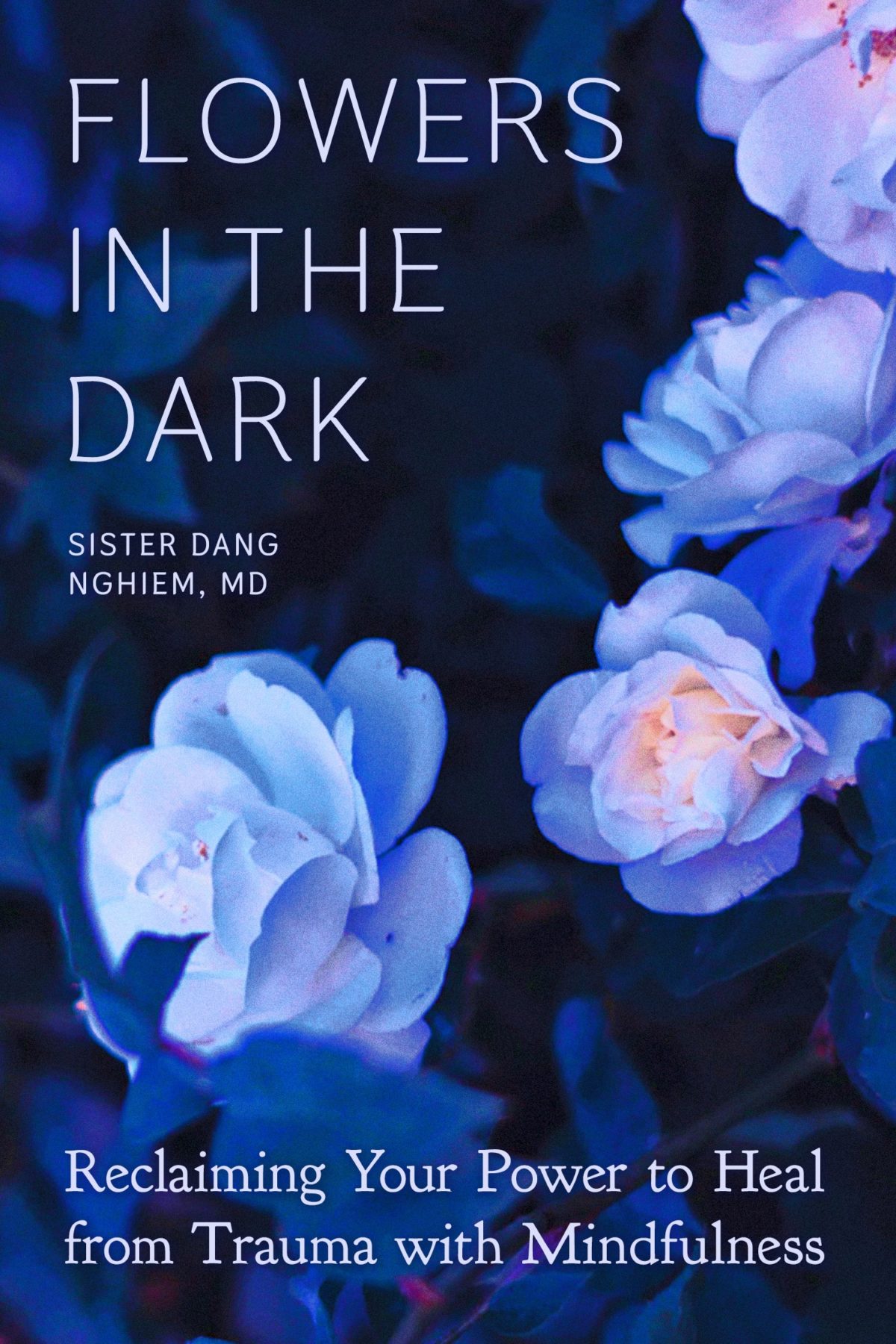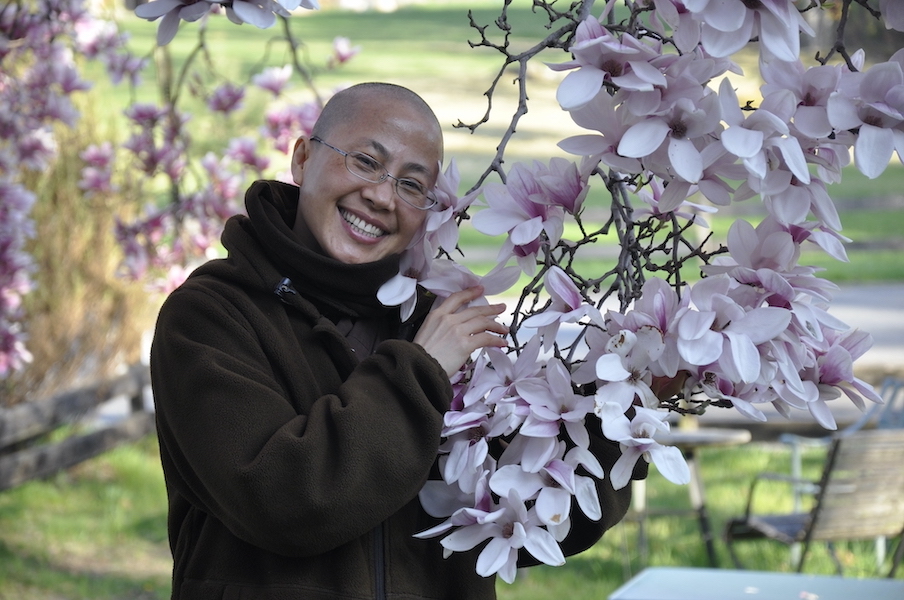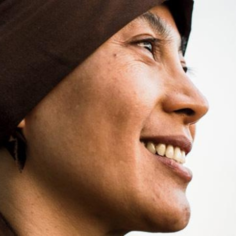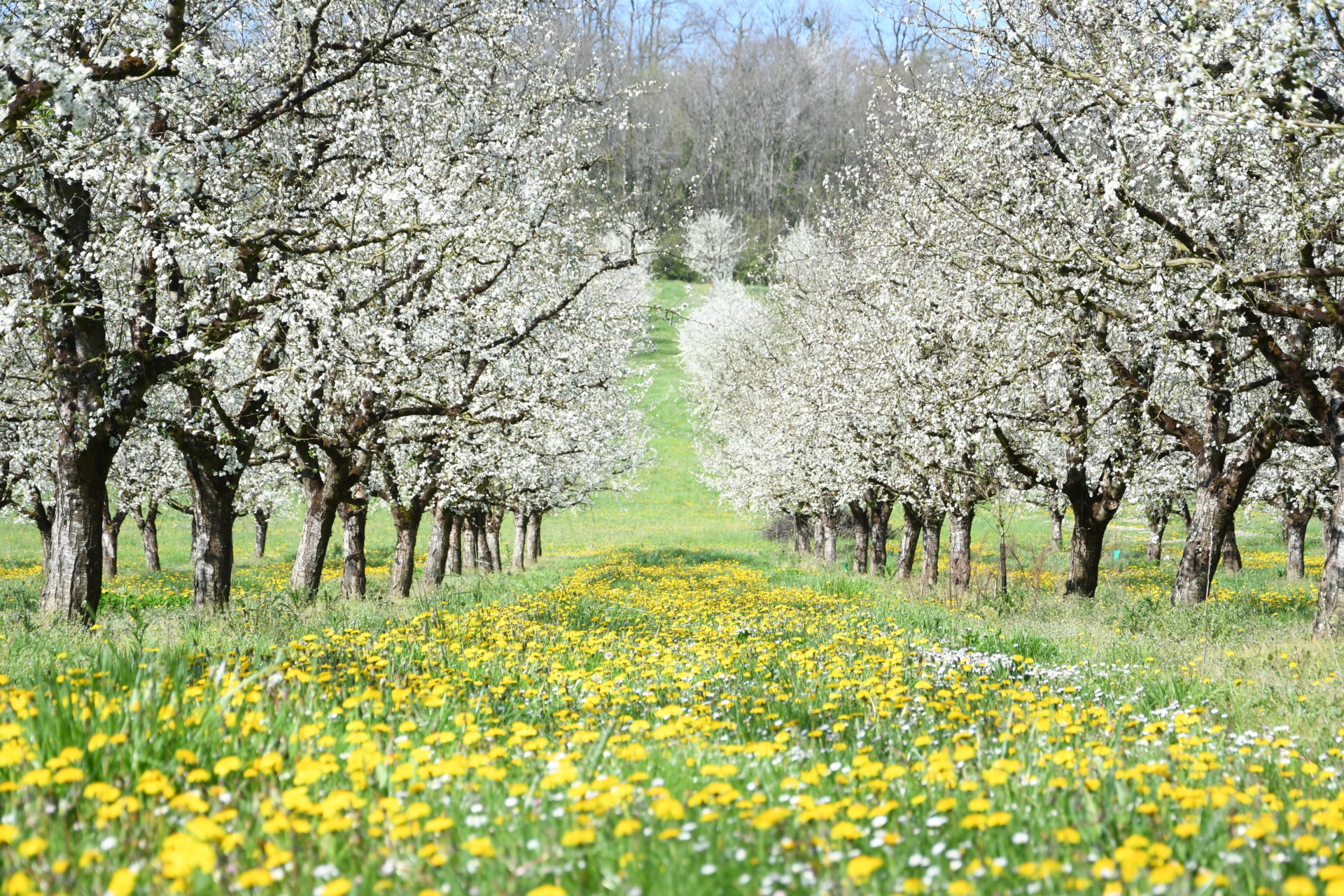Reclaiming Your Power to Heal from Trauma with Mindfulness
By Sister Dang Nghiem in March 2021

In Flowers in the Dark, Sister Dang Nghiem brings together her lived experience as a survivor of trauma, certified MD, and ordained Buddhist teacher to offer a body-based, practical approach to healing from life’s most difficult and painful experiences.
I arrived in the United States as a sixteen-year-old refugee,
Reclaiming Your Power to Heal from Trauma with Mindfulness
By Sister Dang Nghiem in March 2021

In Flowers in the Dark, Sister Dang Nghiem brings together her lived experience as a survivor of trauma, certified MD, and ordained Buddhist teacher to offer a body-based, practical approach to healing from life’s most difficult and painful experiences.
I arrived in the United States as a sixteen-year-old refugee, an orphan carrying invisible wounds from my childhood, holding the hand of my younger brother. We were sent to live in Tempe, Arizona. My younger brother and I bounced from one foster home to another, but I focused on my studies, taking refuge in academic achievement. (This, as we will see, is a common pattern with people with trauma: We keep ourselves busy to avoid our feelings.) I wrote poetry and journaled, and I was lucky to have teachers in my life who paid attention and supported me toward higher education. After working my way through a bachelor of arts degree in English literature and a bachelor of science degree in psychology, I left Arizona to train in medicine at the University of California, San Francisco (UCSF), where I specialized in family medicine. Then I volunteered as an intern in Kenya and in India. I was a true immigrant success story. I had a respected position in society, money, an apartment in San Francisco, and a loving relationship with an extraordinary, wonderful man, John.
Soon after I started working as a doctor, I attended a meditation retreat with Zen Master Thich Nhat Hanh, whom I would come to address as “Thay,” which means “teacher” in Vietnamese. At the retreat, I woke up to the true state of my life. I had believed that after all the hardships I had been through, I would be happy if I had a good job and if I had a beautiful, loving relationship. Like many trauma survivors, I naively believed that working insanely hard and achieving success would make up for my past misfortunes. To my surprise, it was not the case. I had everything I wanted, but I was inexorably haunted by the past. I continued to behave as if I were still a little girl, wounded and confused. This discombobulated child manifested in my daily life through my thinking, my speech, and my behaviors, and it hurt my relationships, especially with John.
Suffering was alive and thriving in me. When we are children, many things happen to us, pleasant and unpleasant, and we do not have control over those conditions. When we suffer from trauma, even when the original causes and conditions are no longer present, we still continue to suffer. As an educated young woman, I did not have anyone treating me badly. Yet, my way of thinking, speaking, and behaving caused me to perpetuate my own suffering in many ways. It was as if I subconsciously kept my trauma alive and fed it. I struggled with feelings of unworthiness, which affected my relationship with John. Despite going to medical school and absorbing the scientific approach to the mind through psychiatry and psychotherapy, I had no way of getting in touch with my suffering and the wounded child within me.
At this first retreat with Thay, I realized that the causes and conditions of my suffering were now no longer external, but internal. That was the first time I recognized that the way out of suffering was to turn my attention inward. “The way out is in,” Thay liked to say. I needed to come back to myself and no longer point the finger outward looking for external causes. These insights were born from my first steps on the path of mindfulness.
Childhood trauma has the most severe impact, but even when we are adults, things that occur outside our control can still cause trauma. Three weeks after this first retreat, on the day before my birthday, John died. He had been seen at the beach in Half Moon Bay where he sometimes swam, and his clothes and his car were still there. I received the news at 2 a.m., while I was on call at the hospital.
John’s sudden death seemed to wake up every single cell of my body. He had loved life so much and he had lived so fully, with such lightness and tenderness, that when he died, I honestly think he had nothing to regret. My own spirit, however, was broken. I could not go back to my old life, because the suffering that had been filling me to the brim was now spilling over. I did not have the capacity to continue living as before. I faced two stark choices: one was to end my life, and the other was to take refuge in the teachings of the Buddha and transform my suffering completely.
I saw clearly that if I ended my life by my own hand, all the good and beautiful things I knew to be true, all the seeds of hope and confidence that I had planted in my brother and the young people I knew, would never compensate for the pain and confusion my death would cause them. I thought about my brother, the only family I had. I thought about the patients and the incarcerated youth whom I had cared for during the six years of my medical training. This sense of responsibility to them somehow saved me.
The path of practice was really my only choice. Within three months after John’s death, I was with Thay, in his monastery in Plum Village in rural southwest France. First founded by Thay and peace activist and social worker Sister Chan Khong as a home for refugees, Plum Village is now a home for several hundred monks and nuns. It was the right environment for me in which to learn how to meditate, transform my suffering, and give time to my healing process.

Interbeing
“To be” is to inter-be. You cannot just be by yourself alone. You have to inter-be with every other thing. -- Thich Nhat Hanh
Mindfulness practice rests on key teachings from Buddhist psychology about the mind as well as the interconnectedness of experience and time. Everyone who undergoes severe trauma faces similar challenges: to try to pick up the pieces of our lives and continue as before; to stop and turn more intentionally toward healing, however that may appear in our lives. While we may not recognize it at the time of a traumatic event, life-changing suffering has a way of being an opening to a greater understanding of life.
The “mud” of our most painful experiences can become the fertile ground for the blossoming of our understanding and self-compassion. This is a hard truth to accept if we are resolved to see a good life as consisting only of positive events. Reality, as reflected in the Buddha’s Four Noble Truths, tells us that life is suffering—but also that there is a way out. If the war in Vietnam had not happened, my father, most likely an American soldier, would never have met my mother, and I would never have been born. Thay would never have gone into exile and never would have founded the Plum Village practice centers in France. Without the upheaval and violence of the war, Thay’s teachings of peace and mindfulness would not have taken root in the West. Within the worst sorrows may lie the greatest joys, and the opposite may also be true. This happened because that happened; this is because that is; every event is interrelated and comes into being together.
We can’t have the lotus without mud, and this knowledge of interbeing helps us see the mud with new eyes. When there is trauma involving another person, we may try to cut off the pain by breaking off contact. This may be difficult if they are a family member, but it is possible. What is not possible is to separate ourselves from the perpetrator within us. We may change our outer circumstances and try to forget the people and situations that caused us to suffer, but they continue to live within us and disturb us.
Changing our perspective on our suffering helps us respond to it differently. Change is hard to put into practice, though, because we are creatures of habit. The process of meditation is, in a way, a process of waking up. Changing our mind isn’t only an intellectual or metaphysical exercise. Changing our mind about our trauma affects us in all ways, because as we now know, the mind and body are one. What happens to one cannot not affect the other. By meditating and following the path of mindfulness, we will experience moments of insight that open up space in our lives for healing. Similarly, because we are social beings, we find that what happens to one person in our community affects us all, in one way or another.


